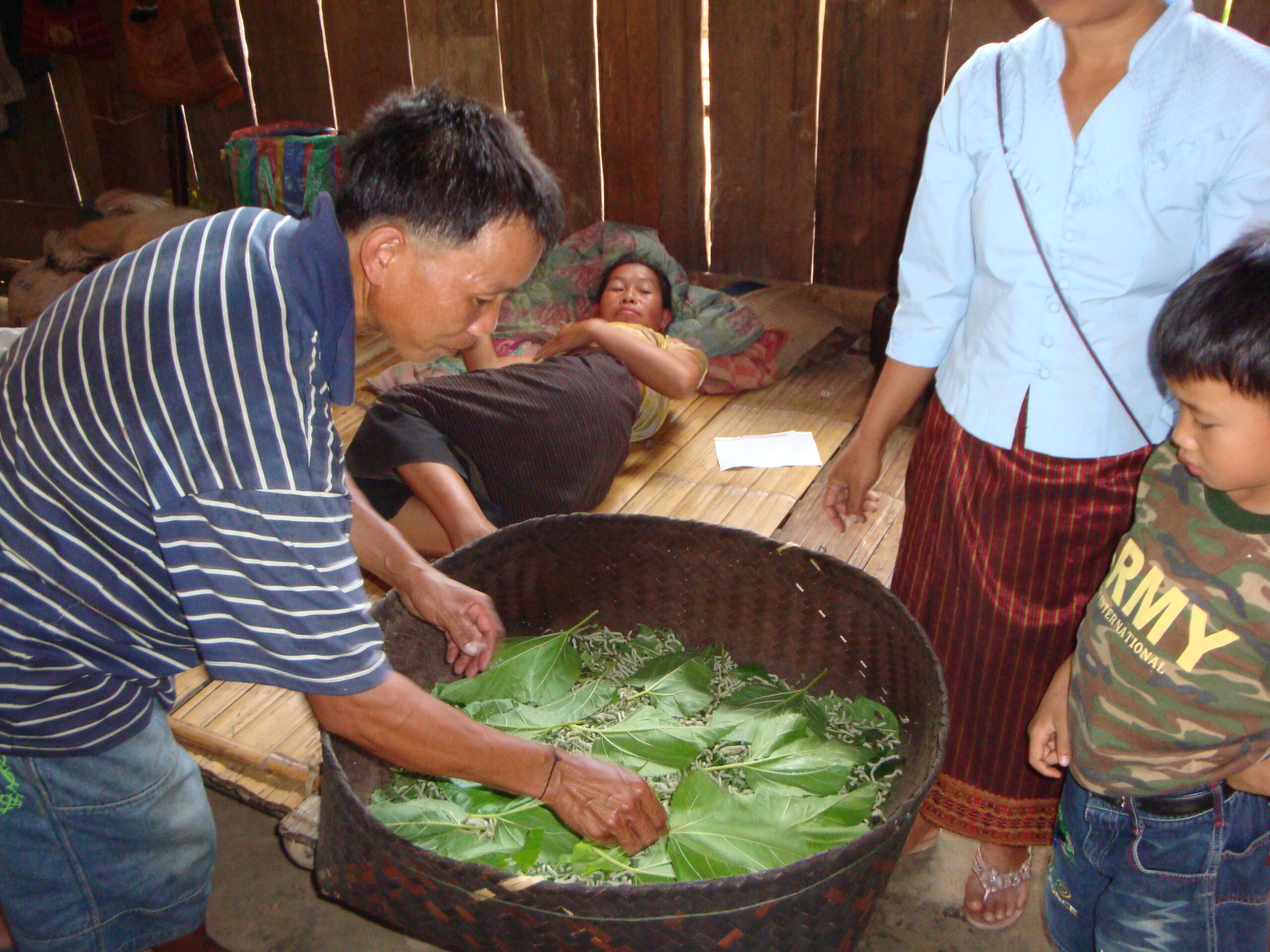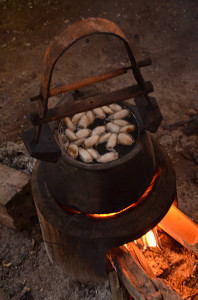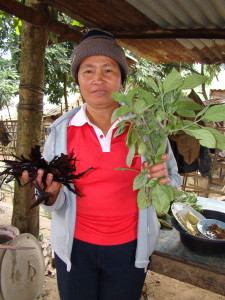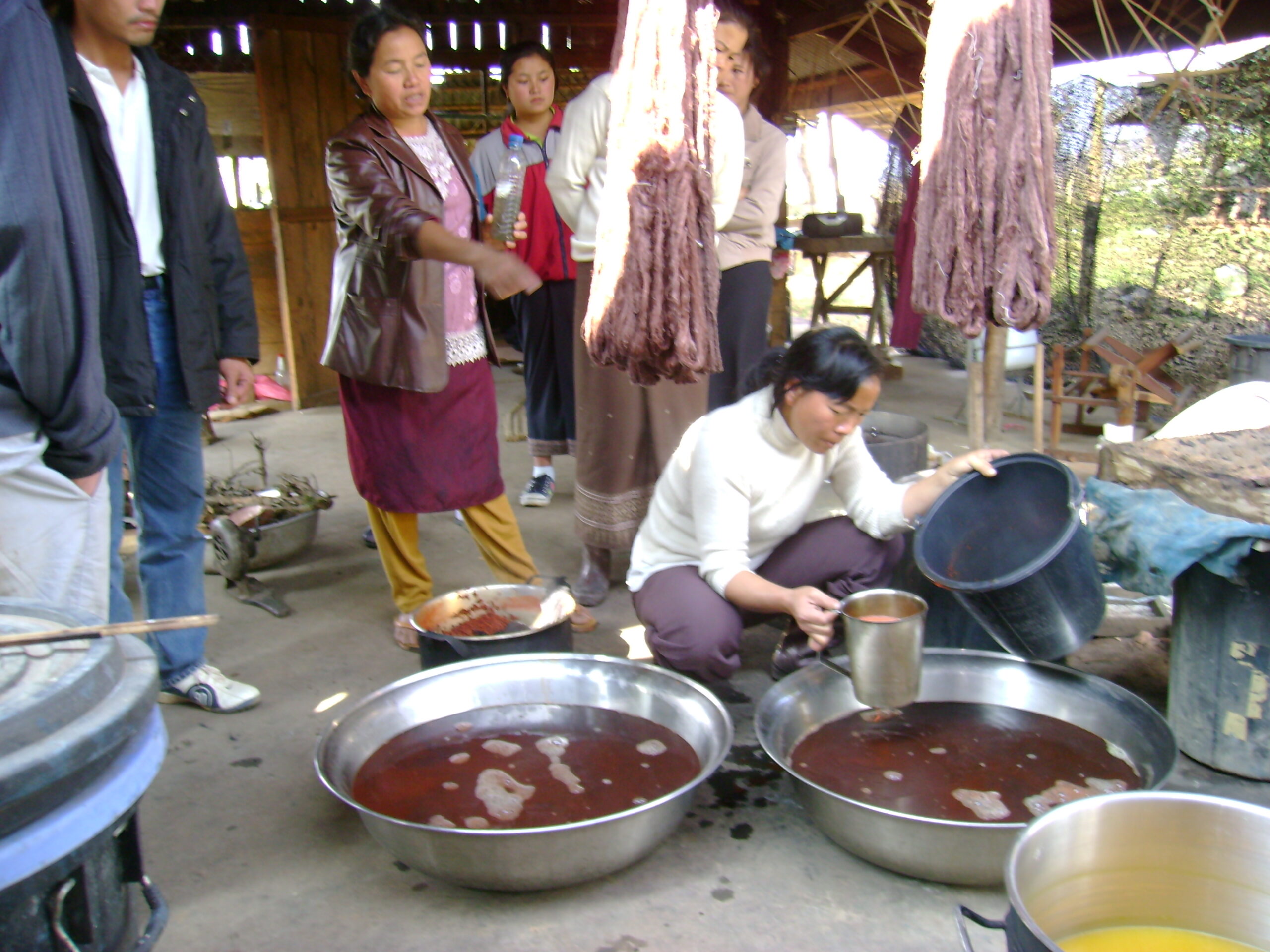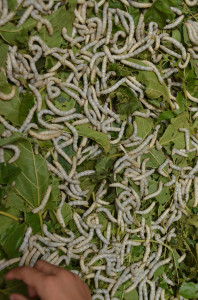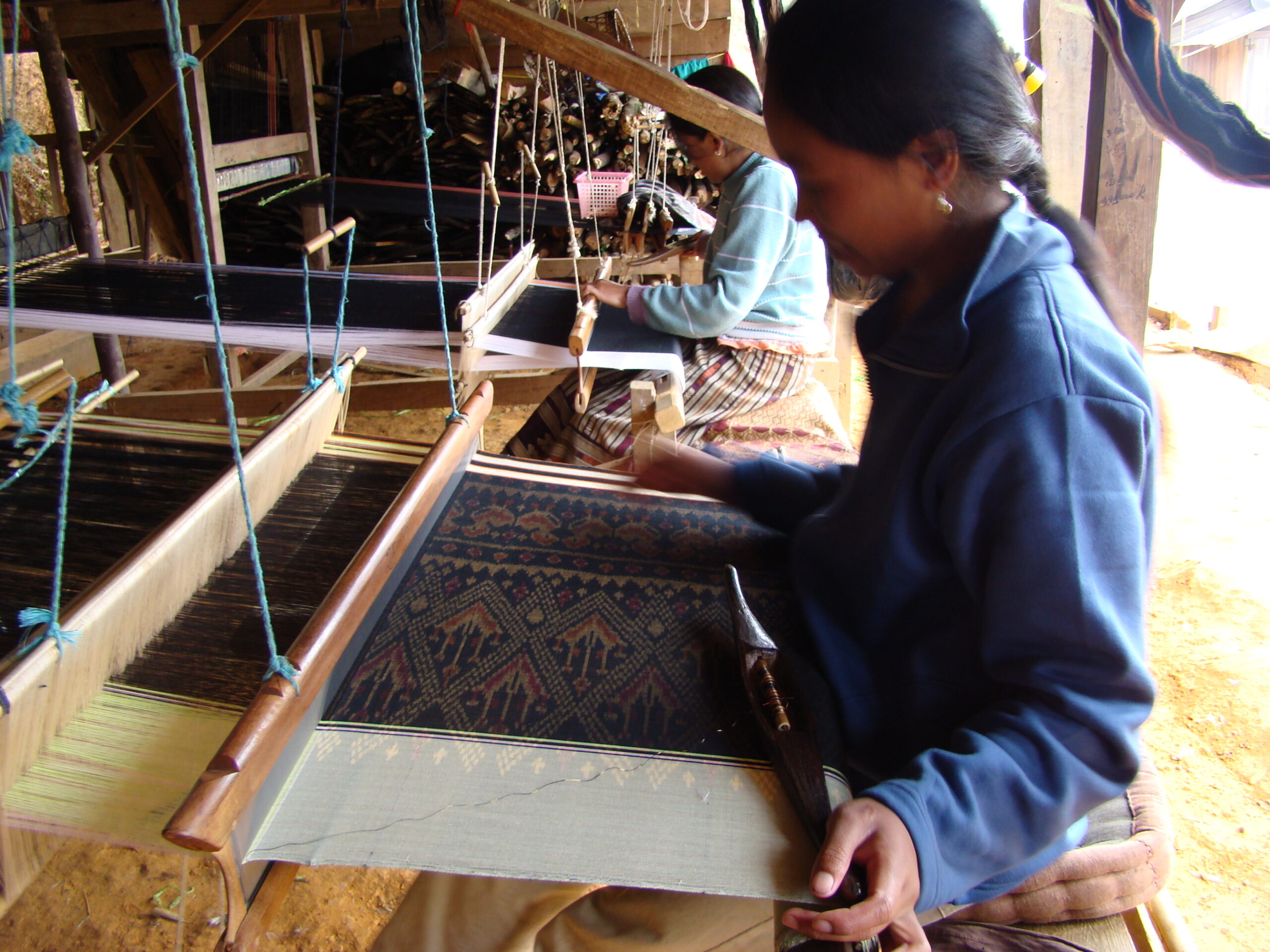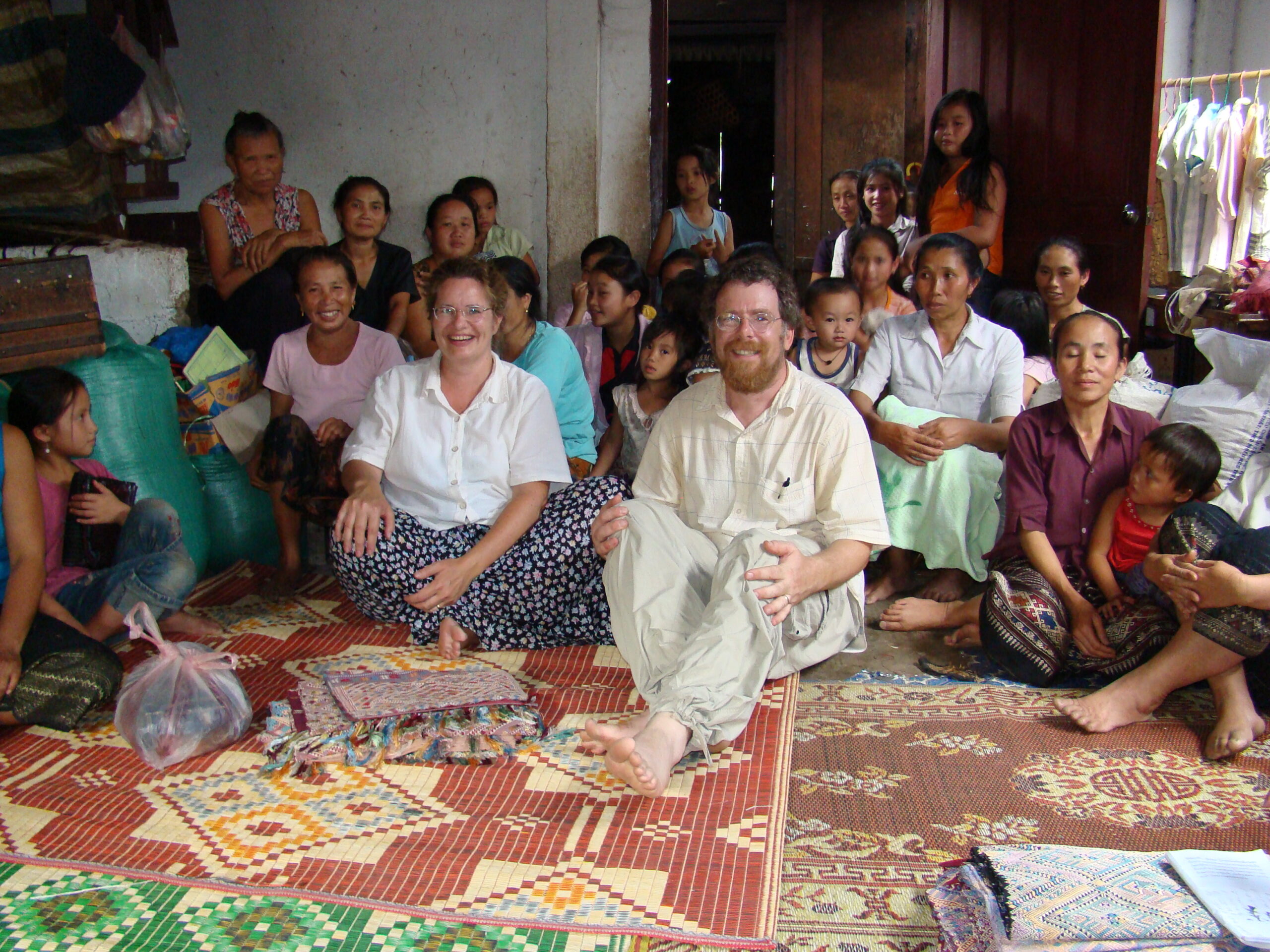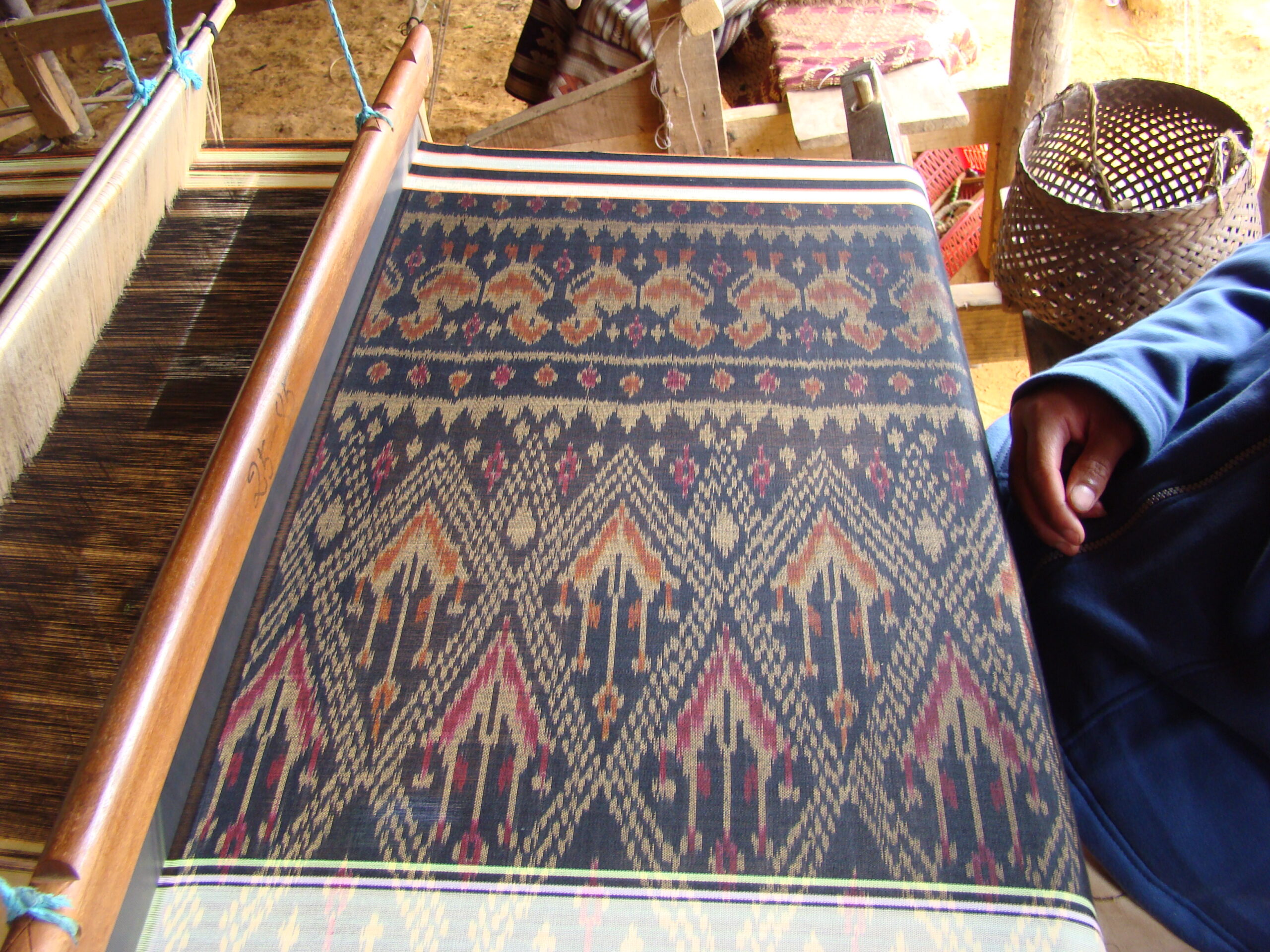Almost every silk creation Above the Fray showcases that comes from Houaphon Province, Laos relies on several cooperating independent artists.
The silk to weave Above the Fray’s textiles is raised by Houaphon’s sericulturists in the traditional method that goes back 1000 years. These “farmers” work year around to breed, raise and nurture the tiny worms to produce on of the world’s finest textile fabrics. And they really do only eat mulberry leaves!
The developed silk cocoons are then put in boiling water and the raw silk is carefully reeled. The reeled silk is purchased by the dyer, who prepares the silk’s texture and color using 100%-natural and locally-available materials that include bug secretions (lac), bark, roots, leaves, wood ash and more. Dyers also use their chemistry skills and add special mordants to the silk to assure that each color adheres with no bleeding.
The dyer then takes the silk to a weaver who creates the finished cloth on a large bed-sized loom-frame. While the selection of colors is conceived by the dyer, the weaver herself determines the location of the supplemental colors that, in her mind, most effectively enhance the complex, nuanced geometric pattern (often helping a particular motif stand out or remain hidden).
The specific, detailed design for each textile is generated by the loom’s pattern-template (khao ti die) that was created by yet another artist. Khao ti die can be stored and re-used, and many patterns have gained powerful, symbolic meaning over generations of use.
Upon completion of the weaving – which for a large cloth may take four or more months – the weaver is compensated by the dyer, and then the dyer has a vital, secondary role: getting the silk to market at a fair price.
This cooperative system allows the sericulturists, dyers, weavers, and template-makers to continue to live, if they choose, in their own small village, raising their families and maintaining a stable, traditional lifestyle. The system also allows the dyer to “oversee” the entire process to assure quality and continuity. Dyers who maintain this oversight role are notorious for their business savvy.
It should be mentioned that not all Houaphon silk artists participate in this traditional cooperative economic model. Some may perform multiple, or even all roles, in the process of raising, dyeing, designing and weaving a textile (and getting it to market, as well). In fact, we have yet to meet a dyer or template-maker who did not start out excelling as a weaver.
Above the Fray travels directly to the independent artists in Houaphon allowing us to select the best of the newest creations and obtain a photographic record of the people whose time, talent and vision created that cloth. Several artists anticipate our regular visits, holding back their recent pieces for our perusal and purchase.
The friendships and warmth that these talented people and their communities have offered our family over the years has been our deepest enrichment. We are grateful for the hospitality, trust and companionship that has been extended not only to the two of us, but also to our two sons (now both in college) who traveled with us for our first 10 years. These on-going, personal relationships with the independent artists allows Above the Fray to uniquely showcase the world’s finest silk artists and textiles.
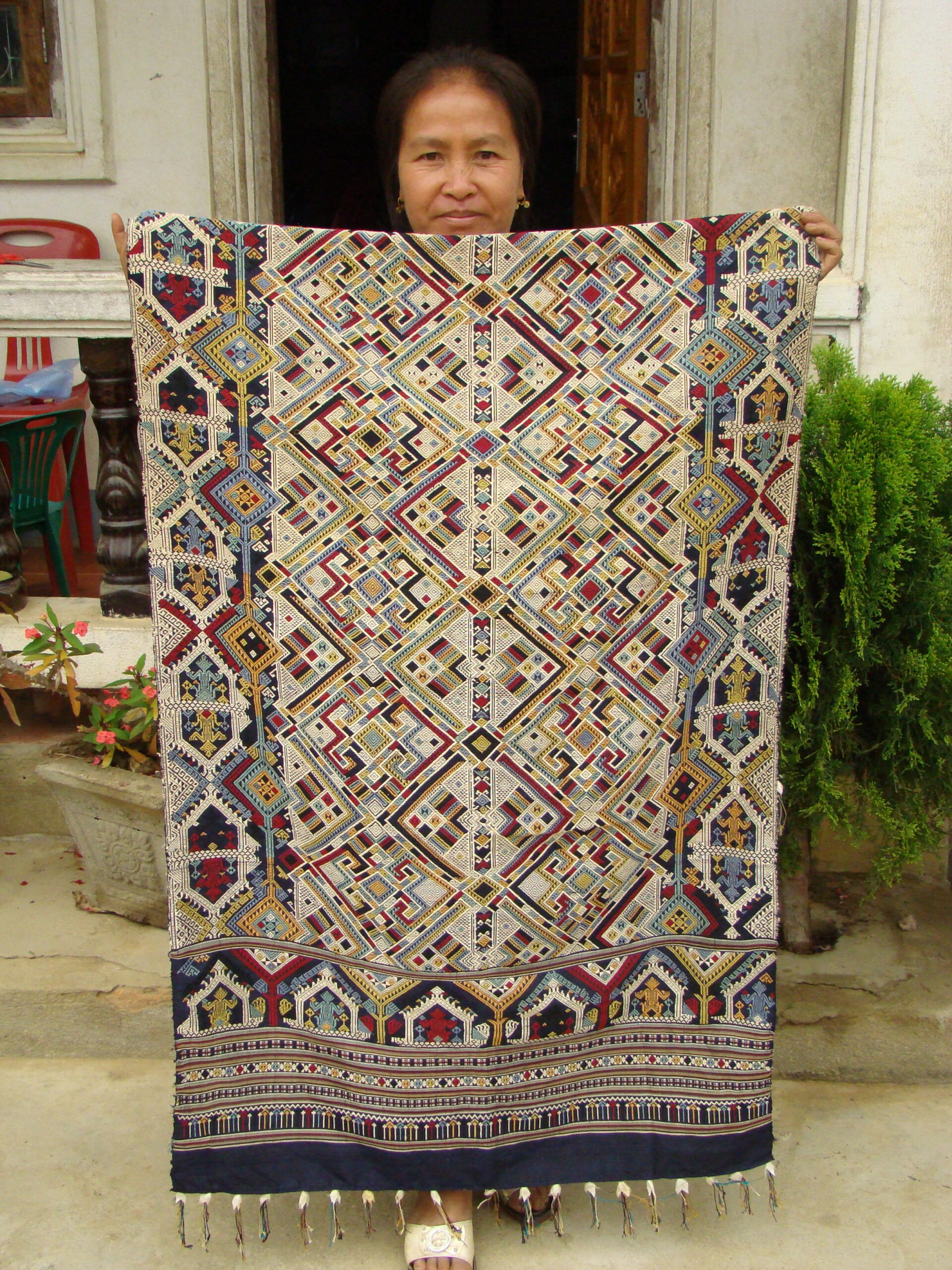
Lun, a master-dyer, displays one of her creations, a ceremonial wedding blanket. She created the colors and was responsible for the pattern. Motifs include a the rim of ancestor spirits in a candle-adorned temple, and, in the lighter colored center-design, a virtual nest of geometric river serpents called naga, or nyeuk.

